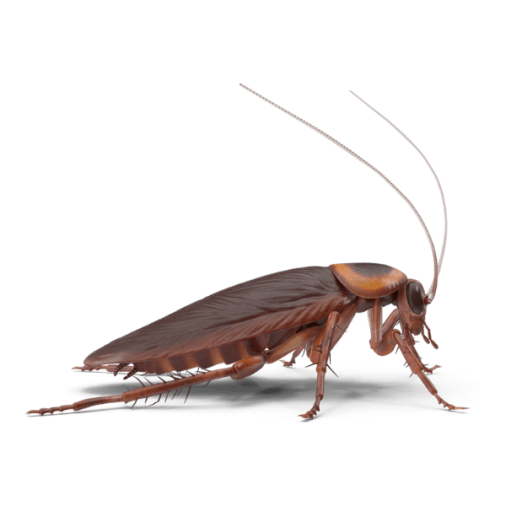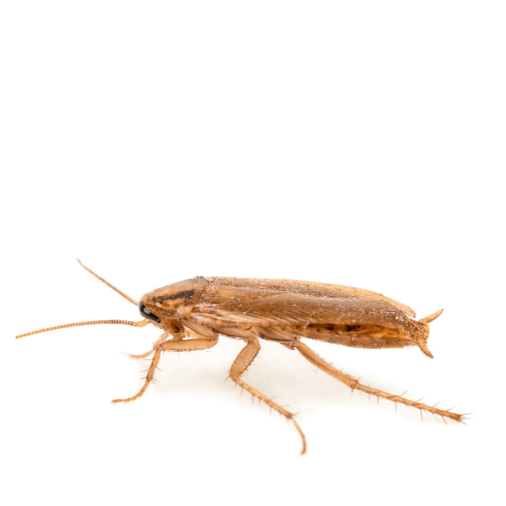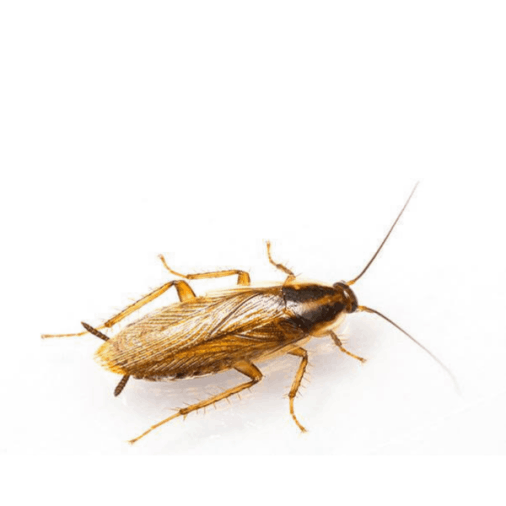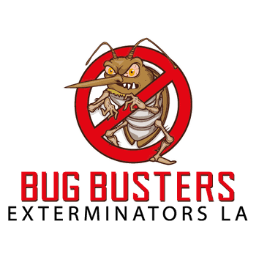Adult German cockroaches have wings, but they cannot fly. If they fall, they can flutter their wings enough to break the fall, but cannot use their wings to get around. They are fast runners and move very quickly in their environment. Their antennae are relatively long, a little longer than the length of their body, and serve as powerful sensory devices for evaluating their environment, finding food and receiving messages from other roaches.
Male adult German cockroaches are slender and a little smaller than the females, who are a little larger and wider in the abdomen. When female adult German roaches are ‟gravid,” or pregnant, they have an egg capsule, or ootheca, that can be seen protruding about one quarter-inch from the end of the abdomen. The egg capsule contains about 40 German cockroach eggs, more or less, that will be carried with her until about 24 hours before the new roaches are ready to hatch. She then drops the egg capsule in a concealed location. When the new roaches open it and crawl out, they are on their own.
If a German roach infestation is found, treatment will be applied in areas where roaches have been or may be hiding. Knowledge about the German cockroach is vital for effective treatment. For example, young roaches often feed on the fecal droppings of the adult cockroaches in “aggregation” areas, while the adults are out looking for food. As grotesque as this may sound, it is a key to pest control that helps achieve timely and effective cockroach elimination. Professional baits are slow-acting by design. When the adults start feeding on baits, they are preparing a final meal for the young roaches. They live just long enough to digest the bait, get back to their aggregation hangout, and leave their final legacy for the up and coming young roaches.




